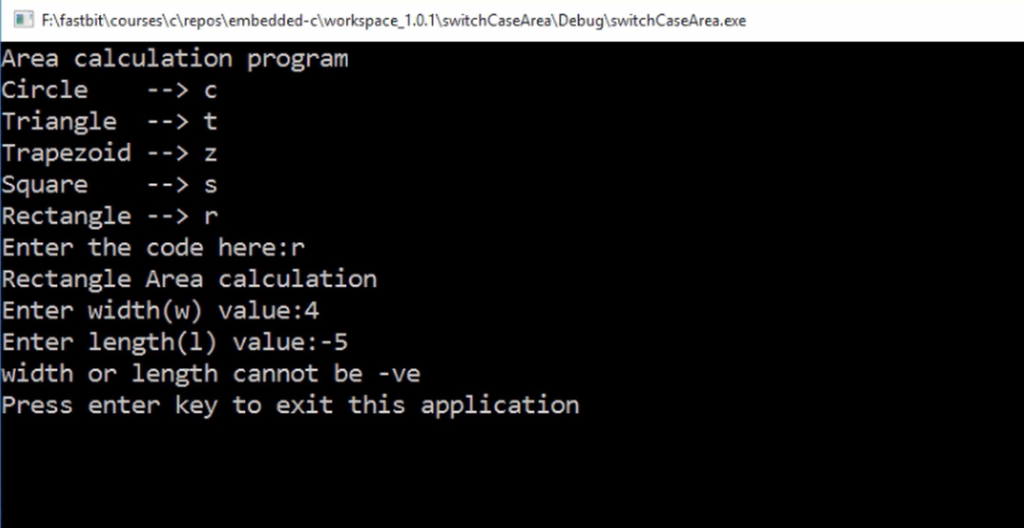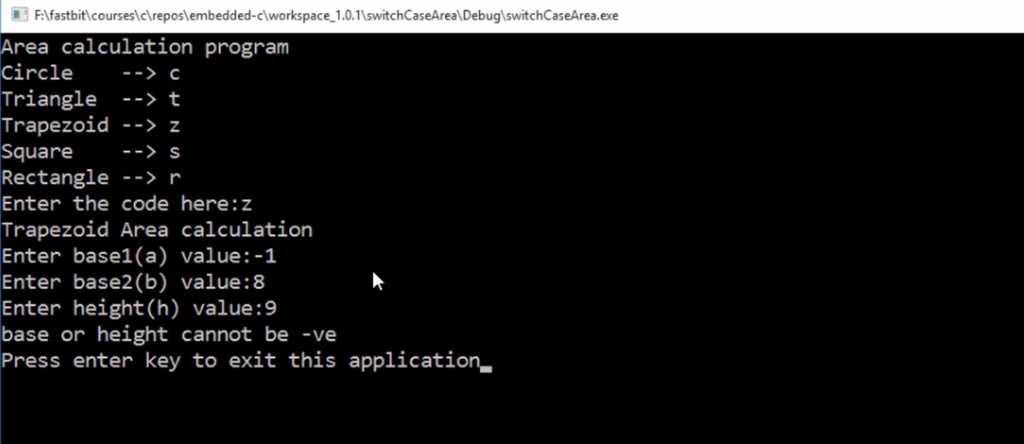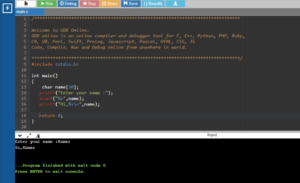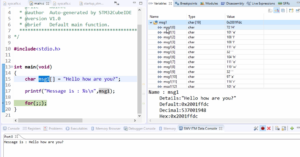switch case exercise solution
In this post, let’s continue our previous exercise.
Let’s modify the code to handle the negative numbers.
First, let’s check the case c, which is a circle. Here, after getting the radius(r) value, if(r < 0), then you have to print “radius cannot be negative” and make the area -1. So, calculate the area only if the radius is positive. That’s why I use the else statement here.
area=3.1415*r*r is calculated only when the radius is positive; otherwise, the area will be concluded as negative.
switch(code){ case 'c': printf("Circle Area calculation\n"); printf("Enter radius(r) value:"); scanf("%f",&r); if( r < 0){ printf("radius cannot be -ve\n"); area = -1; }else{ area = 3.1415 * r * r; } break;
Handle negative numbers code
Here in the case ‘t’, we can consider two values: base and height. So, after reading the values b and h, let’s add the code. if((b<0)|| (h<0)), then print “base or height cannot be -ve”; else, it calculates the area.
case 't': printf("Triangle Area calculation\n"); printf("Enter base(b) value:"); scanf("%f",&b); printf("Enter height(h) value:"); scanf("%f",&h); if( (b < 0) || ( h < 0)){ printf("base or height cannot be -ve\n"); area = -1; }else{ area = ( b * h)/2; } break;
Here in case ‘z’, we use 3 variables: a, b and h. So, if(((a < 0) || (b < 0) || (h < 0))), if one among these become negative, this expression will be true, then you can print “base or height cannot be negative”. That’s correct.
case 'z': printf("Trapezoid Area calculation\n"); printf("Enter base1(a) value:"); scanf("%f",&a); printf("Enter base2(b) value:"); scanf("%f",&b); printf("Enter height(h) value:"); scanf("%f",&h); if( ( (a < 0) || ( b < 0) || (h < 0) ) ){ printf("base or height cannot be -ve\n"); area = -1; }else{ area = (( a + b)/2) * h; } break;
In case ‘s’, if(a < 0), then print “side cannot be negative”; Otherwise, calculate the area.
case 's': printf("Square Area calculation\n"); printf("Enter side(a) value:"); scanf("%f",&a); if( a < 0){ printf("side cannot be -ve\n"); area = -1; }else{ area = a * a; } break;
And also do the same as a rectangle.
Let’s execute the code and see the output. First, let me try a rectangle. Enter width value, I type 4, and length value I enter negative number -5. So, it shows width or length cannot be negative. That’s correct.

Let’s try once again. Look at Figure 2, it shows the correct output.

We completed the discussion on switch/case statements, and so we are going to use switch case statements in our embedded programming as well. That’s all about a switch/case statement.
Get the Microcontroller Embedded C Programming Full Course on Here.
FastBit Embedded Brain Academy Courses
Click here: https://fastbitlab.com/course1



